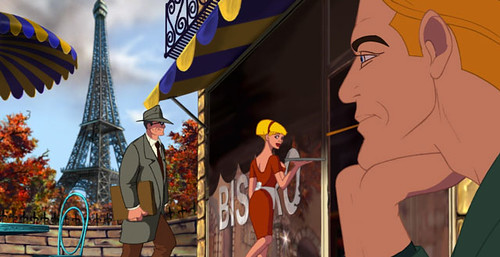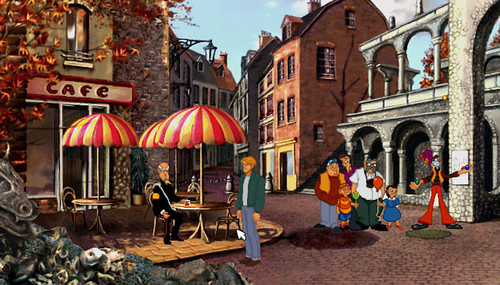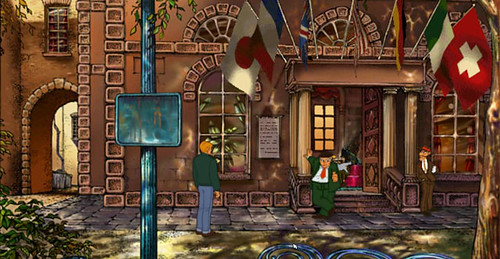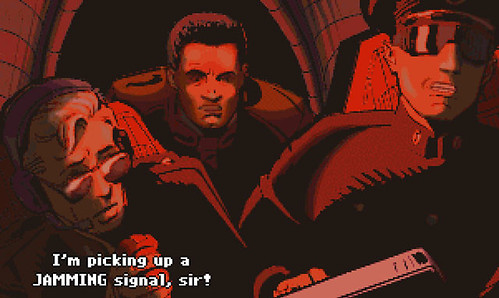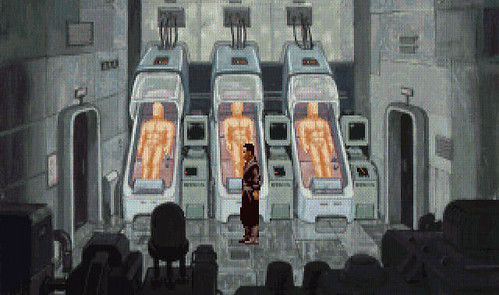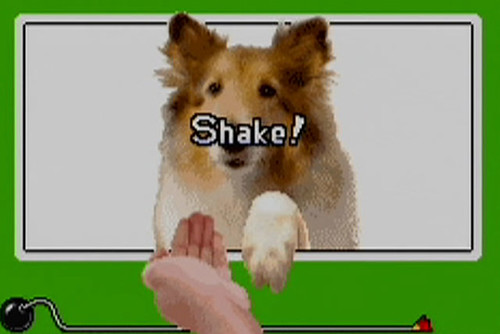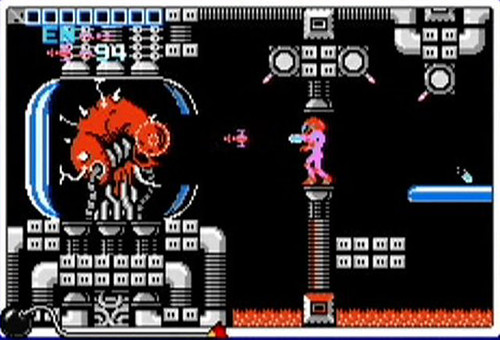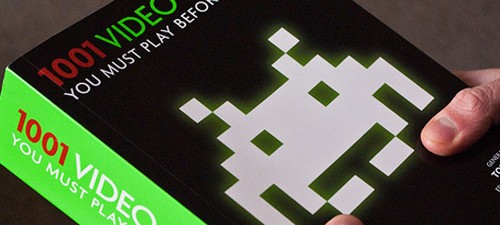
1001 Challenge
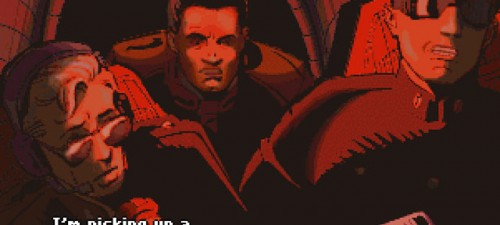
Point ‘n’ Click roundup: Revolution (+free games!)
While LucasArts are known as the kings of Point ‘n’ Click, another studio in the 90’s was producing some of the best and most gripping adventure games of all time — and they were British. Revolution Software, based in York, were behind one of the biggest franchises in adventure game history — Broken Sword. The 1001 book touches on the first game in the series, as well as another point and click classic, Beneath a Steel Sky.
1001 No.55: ‘Broken Sword’ (1996)
Playing Broken Sword is one of my fondest childhood memories, and is one of those games where seeing the opening cutscene and first screen of the game just brings back waves of nostalgia.
It’s an amazing story, an adventure that starts so simply but ends up in locations around the world. You are George Stobbart, a simple American tourist, caught up in an explosion at a Parisian Café. Everything and everyone is of course not as they seem, and the plot descends into a complex conspiracy, involving murder, deception and the Knights Templar.
It’s a brilliant plot, one that twists and turns all over the place as more mysteries are uncovered. The voice acting, sound and music are all top notch, and the controls are so refined compared to the earlier LucasArts adventures. Despite being set mostly in France and starring an American, it’s full of very British humour — and the puzzles are clever but not so abstract that it requires a walkthrough at every step.
I’m a huge fan of this whole series, which is still going today, but the original game is undoubtedly the best. Play it, and the sequel ‘The Smoking Mirror’, and if you like them try the others — they went 3D for the 3rd game onwards, so it’s a bit of an acquired taste. Never feels quite the same as the good old original…
1001 No.56: ‘Beneath a Steel Sky’ (1994)
One of the earliest adventure classics from Revolution Software, Beneath a Steel Sky is set in a dystopian future, where the world has been ravaged by conflict and pollution. There’s a great atmosphere throughout, and it’s awesome. You can see how Revolution honed their craft, going on to produce the Broken Sword series — and if you’re a sci-fi fan like me, you’ll love it.
It’s short but sweet, with some excellent humour, but also a real sense of danger — you can die in these games, not like in those cutesy LucasArts adventures! Like Broken Sword, your character is thrown into a mystery, and you have to uncover the truth about the city that you’re lost in. It was a huge commercial success at the time, and won numerous awards — and is still called by some the best adventure game of all time.
Get some free games
One of the best things about this game though is that it is now freeware — either sign up with www.gog.com (an essential resource for your classic gaming needs) and download it from them, or get it straight from www.scummvm.org — which I hope you’ve visited already to get your old awesome LucasArts games working. You can also grab Lure of the Temptress while you’re there — the first game that Revolution produced.
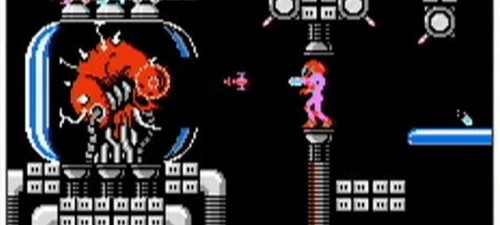
[1001] Wario Ware
It’s a little difficult to describe the WarioWare series — every game is very simple at heart, and yet so brilliantly put together. You could call them a bunch of ‘minigames’, and have done with it — but that doesn’t come close to showing how much fun and often downright hilarious these games can be. The UCHG had fun a few years back with the Wii edition of the series, ‘Smooth Moves’ — check out that vid here.
The 1001 includes a couple from the series:
1001 No.53: ‘WarioWare, Inc.: Mega MicroGames! (2003)
& No. 54: ‘WarioWare: Twisted!’ (2005)
Mega MicroGames was the first in the series, with Twisted! coming out later — both on the Gameboy Advance. All WarioWare titles feature the character Wario, straight out of the Mario series of Nintendo games — but the story and use of characters is never important. What is important are the minigames — and there are tons of them.
Reaction times are a huge factor in each game. You have mere seconds to assess what the hell is going on on-screen, and then react accordingly. The sheer randomness and bizarre nature of some of the minigames is what gives the WarioWare series its charm: some challenges range from trying to shave someone’s beard off, to catching weird bits of food to make a giant sandwich. And some of them are really odd — but the controls remain ever so simple it becomes instinctive in no time.
Each section of each game has a set of different characters, together with their own kind of theme, my favourite being ‘9 Volt and 18 Volt’. Like the UCHG these guys love retro games, and every minigame is full of references to bits of gaming history. Part of the fun is just recognising what each screen has been pulled from.
All these WarioWare games are similar at their core. The Wii version obviously uses the Wiimote, and the ‘Twisted!’ edition actually shipped with a kind of accelerometer built into the cartridge to provide the actions — though because of the mercury in the cartridge was never allowed a European release. I really urge you to track down at least one game from this series — it’s hard to explain how much fun it can be, so just give it a go yourself.
[1001] Theme Park
A little look back at the amazing Theme Park on the Sega Mega Drive…
1001 No.39: ‘Theme Park’ (1994)
[1001] Alex Kidd in Miracle World
One of our earliest vids at the UCHG was a Big Talk about Alex Kidd in Miracle World for the Sega Master System — but we thought it was high time we played it through as a challenge.
1001 No.2: ‘Alex Kidd in Miracle World’ (Sega Master System, 1987)
SB3 Episode 3: Super Mario Kart
In our first video of 2011, we return to the Super Battle Bonanza Blowout — episode 3! Or SB3-3 for short. The scores are currently tied with one win each.
This time, Ross faces off against Fen in that ultimate of racers — Super Mario Kart. With Ross taking the reigns of the dinosauric mascot Yoshi, and Fen the strangely named mushroom-head midget Toad, its time to find out who deserves the title of Mario Kart master; or, uh, who can at least reach the finish.

